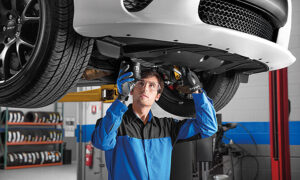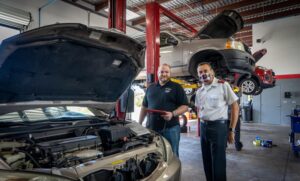
Power windows offer convenience and ease of use, but when they malfunction, it can be frustrating. Before you call a professional for power window service, taking some time to observe the issues can help you provide valuable information, potentially streamlining the repair process and saving you time and money. These observations can help technicians diagnose the problem more accurately and efficiently.
Understanding the Type of Malfunction
Carefully note the specific behavior of the malfunctioning window. Does it move slowly, jerk erratically, or not move at all? Is the window stuck in a particular position, open or closed? Pay attention to any unusual noises, such as grinding, clicking, or whirring, emanating from the door panel when you attempt to operate the window. These sounds can indicate specific problems like a faulty motor, damaged regulator, or a worn-out cable. Noting whether the problem is isolated to one window or affects multiple windows can also be a significant clue.
Checking the Window Switch and Electrical Connections
Examine the window switch thoroughly. Check if the button feels loose or sticky. Try operating the window using the switch on both the driver’s side and the individual door. If the window works from one switch but not the other, it likely points to a switch malfunction rather than a problem with the window motor or regulator. Also, check the fuses related to the power windows in your car’s fuse box. A blown fuse is often an easy and inexpensive fix. Inspect the wiring harness for any visible damage, loose connections, or corrosion, especially near the door hinge where wires are subject to bending and wear.
Assessing the Window’s Physical Condition
Observe the window glass for any signs of damage or misalignment. Cracks, chips, or a window that sits crookedly within its frame can impact its movement. If you notice any of these issues, be sure to tell the technician. The Auto Repair in Chico, CA based service checks the rubber seals around the window for wear and tear.
Documenting the History and Circumstances
Think back to when the problem started. Did the window malfunction after a specific event, such as heavy rain, extreme temperature changes, or a recent car repair? Is the issue intermittent or consistent? Any information about recent maintenance or repairs done on the car, particularly involving the door or electrical system, can be useful for the technician. Also, take pictures or videos of the window’s behavior, especially if the issue is intermittent. This visual documentation can offer the technician a clear understanding of the problem.
Gathering Important Information
Before contacting a service professional, collect important details about your vehicle, including the make, model, and year. Having this information readily available can help them determine the appropriate parts and troubleshooting steps needed. Accurately describing the symptoms you’ve observed, any related noises, recent events, and your actions taken can help the technician anticipate potential issues and provide you with a more accurate estimate. By taking these steps, you will be better prepared to explain the problem, which can lead to a faster, more accurate diagnosis, and ultimately, a more efficient repair experience.






